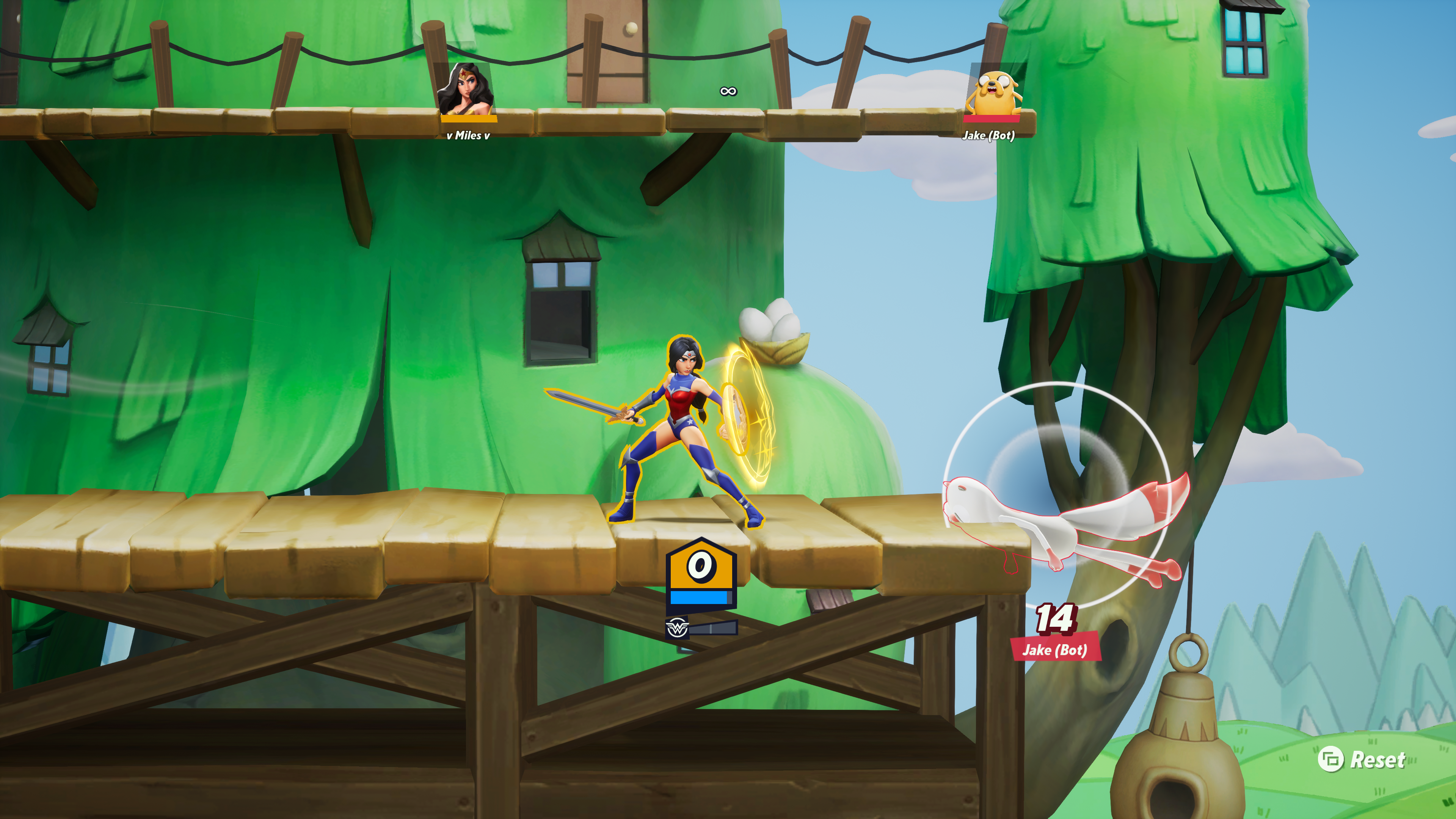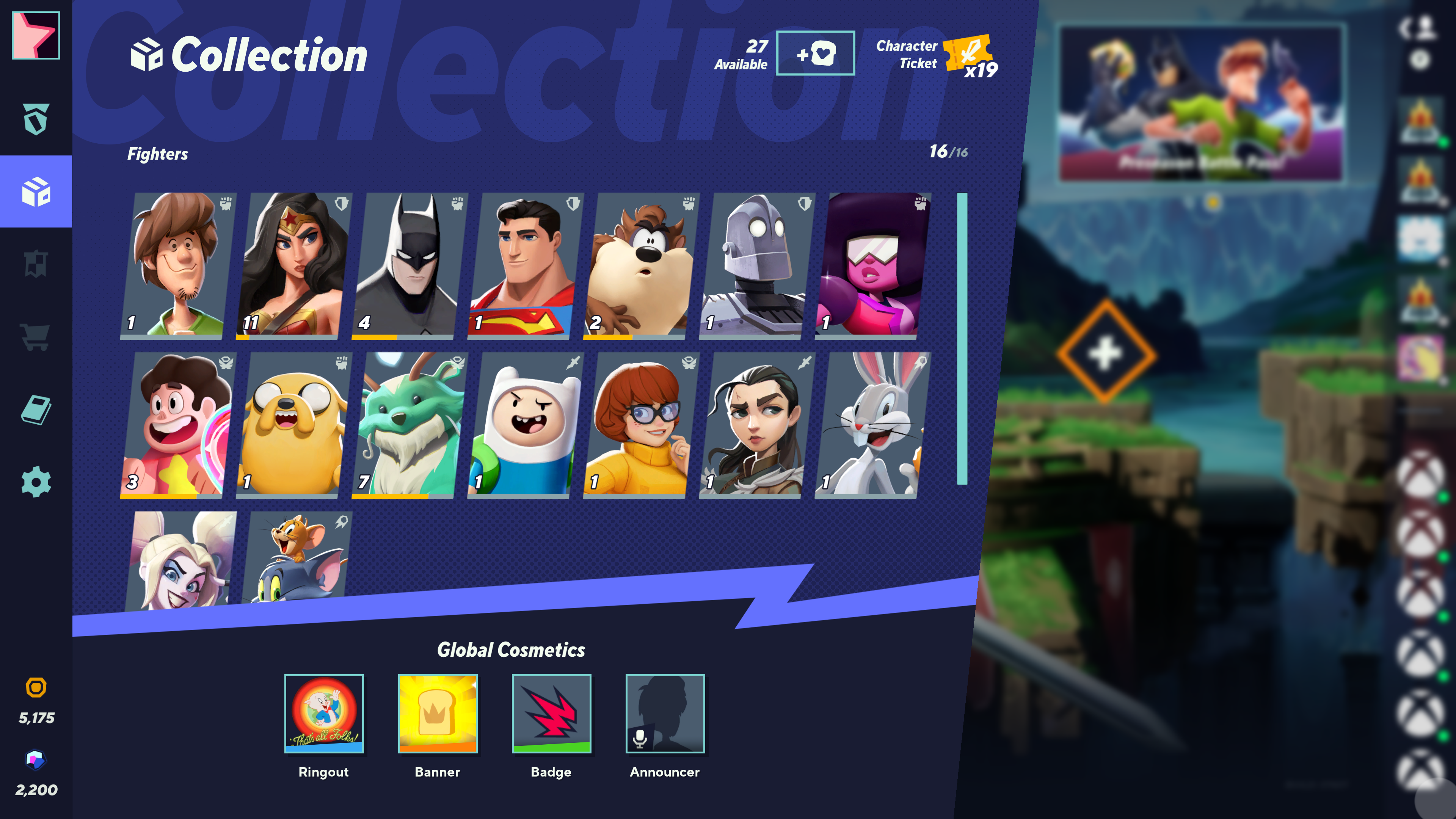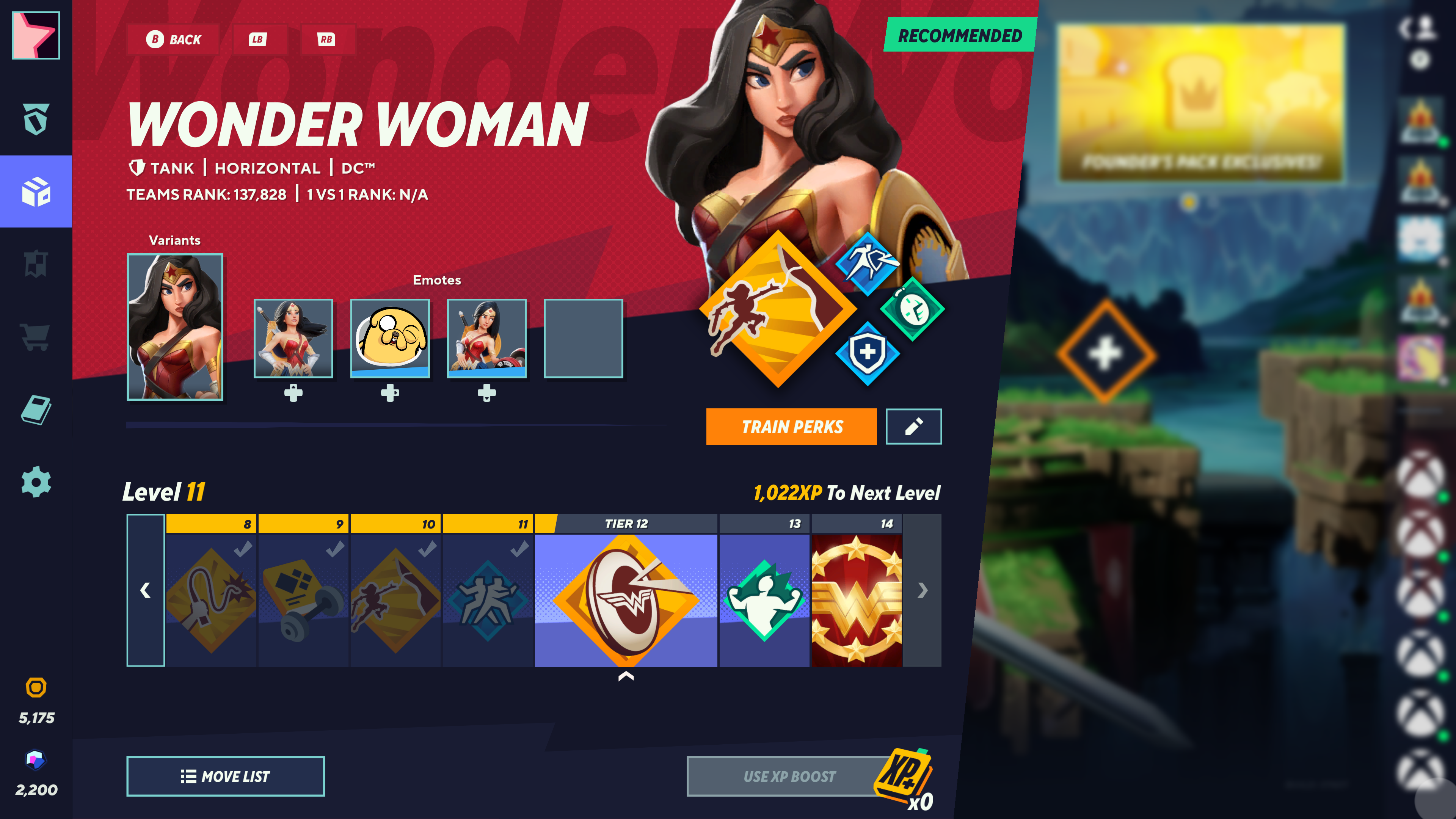I’m a massive fan of platform fighters. In fact, I consider Super Smash Bros. Ultimate to be the greatest fighting game of all time. What started as an absurd multiplayer novelty on the N64 has blossomed into a prominent sub-genre with a fierce online community of competitive players. The ingenious marriage of simplistic pick-up-and-play controls and deceptively deep strategic combat popularized by Nintendo’s premiere fighter has even spawned a myriad of clones and competitors.
From Brawlhalla to Nickelodeon All-Star Brawl, there have been numerous attempts to recapture and refine the Super Smash Bros. magic. I’ve essentially played them all to chase that euphoric platform fighter dragon. Unfortunately, most of these efforts haven’t felt as polished or fluid as the franchise that inspired them. But to my surprise, a new challenger has entered the ring and managed to do the seemingly impossible, meaningfully embrace platform fighters’ competitive side.
MultiVersus from Player First Games and Warner Bros. Interactive Entertainment is the latest crack at succeeding Super Smash Bros. Ultimate. However, this title replaces iconic Nintendo characters like Samus and Mario with WB mascots like Batman, Shaggy, and Bugs Bunny.
On paper, the possibilities with MultiVersus sound chaotic, hilarious, and downright silly, but in practice, this impressive fighting game delivers an outstanding gameplay experience. After spending roughly eight hours smashing Jake from Adventure Time with Wonder Woman’s “Lasso of truth,” I think I may have found a platform fighter with legitimate long-term promise.
Fresh features and modified mechanics

In many ways, MultiVersus mirrors the fundamentals of other platform fighters. Up to four players square off in 2D arena environments and battle to launch their opponents into deadly hazard zones at the edges of the screen. These “Ringouts” typically result in a point for you or your team. Depending on the game mode, you’ll either want to achieve the most Ringouts in a set time or retain your fixed number of lives. How you decide to smash your opponents into the great beyond is entirely up to you. This flexibility leads to thrilling match dynamics.
If you’ve played Super Smash Bros., you’re likely quite familiar with the recovery tools at players’ disposal. The sub-genre standard has traditionally been two jumps, one special recovery ability, and either one air-dodge or one air-dash. MultiVersus takes aerial combat to another level by doubling the number of vertical recovery abilities and air-dashes. Additionally, this WB-themed brawler removes the inactivity punishments from Super Smash Bros. These enhancements allow for significantly improved counter capabilities. Players are required to work much harder for Ringouts in MultiVersus.

MultiVersus inspires and, quite frankly, demands experimentation with every character.
Another frequent critique from competitive Super Smash Bros. purists revolves around how the game enables and (in the case of characters like Nes) even rewards ability spamming. The team behind MultiVersus clearly has problems with players who repeatedly use the same attacks over and over and has opted to incorporate mechanics that punish such behavior. Characters found utilizing specific abilities too frequently will be penalized in the form of damage and knockback decreases for habitual attack inputs.
As well as baseline stat debuffs for spammers, MultiVersus incorporates cooldown timers for destructive special abilities like Tom and Jerry’s mouse trap. While I initially found this particular mechanic somewhat restrictive as someone accustomed to the limitless madness of Super Smash Bros., I’ve grown to appreciate how it encourages deliberate ability usage. Your fighter’s most potent attacks are frequently tied to these cooldowns, culminating in risk/reward assessment before commitment. MultiVersus inspires and, quite frankly, demands experimentation with every character.

Some circles of the fighting game community consider 1v1 matches the pinnacle of competition. Despite its evident desire to appease that audience, MultiVersus prefers to foster 2v2 battles. Unlike Super Smash Bros., this platform fighter sports a host of compelling support abilities that enrich teamwork. Characters like Reindog can fire an ethereal tether that links to allies. If the linked individual is in danger of a Ringout, Reindog can quickly retract this tether and effectively save their teammate from certain death.
Distinct character roles like Tank, Assassin, and Support further embolden the value of 2v2 combat in MultiVersus. Agile Assassins like Harley Quinn speed across the battlefield and rack up devastating damage. While Tanks like Wonder Woman domineeringly control the flow of battle. Understanding the strengths and weaknesses of these classes is critical to achieving the upper hand. All of these fantastic ingredients focused on competitive play combine to deliver a beautifully balanced and engaging platform fighter.
Player progression and (of course) a Battle Pass

MultiVersus is a free-to-play game. So, naturally, it features seasonal Battle Passes and individual character progression. The Battle Pass seems to be standard fare for a modern free-to-play title. There are two tracks of unlockable rewards tied to daily and seasonal challenges. The free base tier provides an assortment of banners, badges, character skins, and more. And the premium paid tier boldly advertises an assortment of notably cooler cosmetic items. The mini pre-launch Battle Pass currently available doesn’t appear to present anything too alarming or egregious.
Thankfully, there aren’t any methods of paying to increase a character’s power in MultiVersus.
Character progression and stat buffs can trigger red flags in hyper-competitive environments. In MultiVersus, players can unlock and equip character-specific perks and upgrades. From increased projectile speed to damage reduction, there are many modifiers one can apply to their favorite characters. With this being a free-to-play title, these systems justifiably stir concerns regarding the potential for “pay-to-win” advantages, especially following Diablo Immortal’s controversies. Thankfully, there aren’t any methods of paying to increase a character’s power in MultiVersus.
The choice to specialize the perks of characters through experience-based leveling adds an excellent sense of progression to the overall experience. With Wonder Woman, I was granted the freedom to tailor the way my Lasso of Truth impacted enemies and allies. Instead of the standard Scorpion-like grab and pull, I transformed this special ability into a potent grapple that propelled me towards enemies. There are a considerable number of perks and ability modifiers in MultiVersus, and I’m excited to see the community run wild with the possibilities.
Is MultiVersus worth your time?

I can’t stop thinking about WB’s MultiVersus. I fully intended to dive into Forza Horizon 5’s Hot Wheels DLC and the depressing cat adventure Stray this week, but this shockingly impressive platform fighter has consumed most of my free time. Even in its pre-release state, Player First Games has established a worthy contender in the space. It’s too early to say whether or not MultiVersus will ever come close to nabbing mindshare from Super Smash Bros. Ultimate. Still, the title’s care, attention to detail, and overall polish are commendable.
Ultimately, ongoing support and community engagement make or break a fighting game. As it stands, MultiVersus has no Arcade Mode or single-player content outside of training and matches against the AI. The emphasis for this platform fighter lies in online matchmaking. As long as WB continues to add fan-favorite characters like Scorpion, Sub-Zero, Gandalf, Neo, Rick and Morty, and The Animaniacs, there’s no doubt in my mind that players will continue to invest in MultiVersus.
If you’re eager to dive in and drop kick Arya Stark as Stephen Universe, you can pick up the Founder’s Pack to get immediate early access. But the free-to-play open beta begins for Xbox One, Xbox Series X|S, PS4, PS5, and PC on July 26, 2022.




